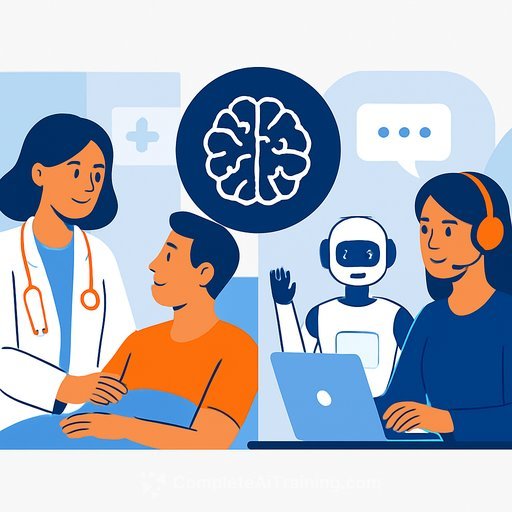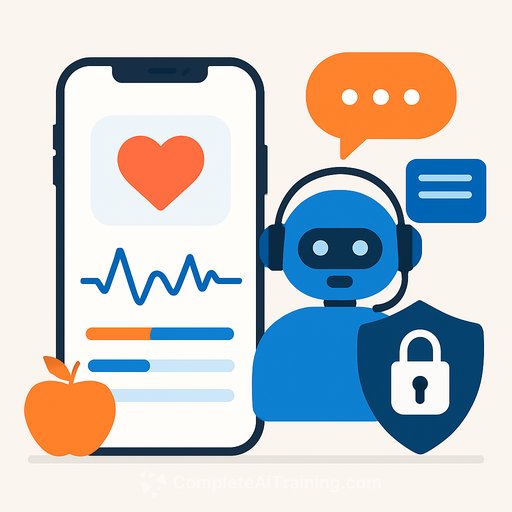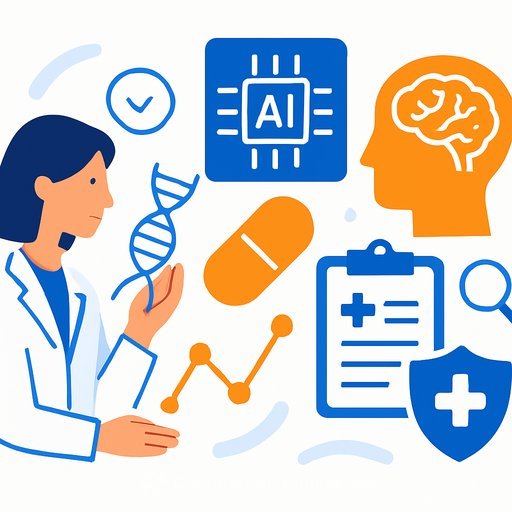Agentic AI in Healthcare: Build It Right, Make Care Better
Healthcare teams are stretched. Agentic AI can ease the load-if it's built responsibly and governed with clarity.
These systems act on their own, make logical decisions, and support humans where it matters. The goal isn't to replace clinicians, but to clear the path for better care.
Where AI Agents Help Right Now
Leaders already see practical, high-impact use cases. In a recent industry survey, the top areas include appointment scheduling (51%), diagnostic assistance (50%), and medical records processing (47%). That's the work that eats into clinical time-and it's ripe for automation.
- Diagnostic assistance: Pattern and anomaly detection can flag early signs in imaging that deserve a closer look. Think faster reads and fewer misses.
- Administrative automation: Insurance intake, billing codes, and scheduling can run in the background, giving staff time back.
- Visit prep: Agents can summarize a patient's history so the clinician walks in informed and focused.
Used well, these tools tighten workflows, reduce delays, and support more accurate decisions.
Bias Is Real-and Fixable
Concerns about bias are justified. Over half of organizations report significant worries about fairness in AI systems, and with good reason. Bias can appear at any stage-from data selection to model design to implementation-and the stakes in healthcare are high.
- Train on diverse, representative datasets, not just what's most available.
- Audit the full lifecycle: pre-deployment testing, post-deployment monitoring, and recurring reviews.
- Assess performance across demographic groups and clinical settings-not averages.
- Document known limits and edge cases; route sensitive calls for human review.
This isn't a one-time fix. It's an ongoing process with safety at the center.
Build for Transparency from Day One
In healthcare, trust isn't optional. AI agents should be built and operated with clear governance, data location tagging, regular audits, and practical explainability. People need to see how a recommendation was made-and what data shaped it.
Responsible AI isn't just a compliance box. It's a design choice. Prioritize data quality, stress-test models, and use decision methods that are proven and repeatable.
Assign Ownership-No Black Boxes
Accountability must be obvious. Who is responsible for an agent's performance-the developer, the clinician using it, or the operations team? If an agent proposes a treatment plan, a named person should verify it before action. AI should strengthen human workflows, not override them.
Encouragingly, 80% of organizations say they're confident in the transparency and explainability of their agents. Keep pushing that standard. Patients, partners, and vendors are safer when the rules are clear.
Practical Next Steps for Healthcare Teams
- Start small: Pick 1-2 use cases with clear ROI (e.g., scheduling and intake).
- Define guardrails: What can the agent decide on its own? What requires human sign-off?
- Measure both sides: Clinical outcomes and operational impact (time saved, error rates, patient wait times).
- Plan data stewardship: Map data flows, apply access controls, and tag data residency.
- Run ongoing audits: Bias checks, drift detection, performance reviews, and incident playbooks.
- Train your people: Clinicians, coders, and ops need simple, repeatable workflows for using and supervising agents.
The Bottom Line
Agentic AI can give healthcare organizations an edge-more importantly, it can help deliver better care. Done right, it supports faster diagnoses, cleaner billing, smarter workflows, and more time with patients.
If you're ready to build skills across your team and move from pilots to outcomes, explore hands-on learning paths for AI in operations and clinical support.
Explore AI courses by job role
Your membership also unlocks:






